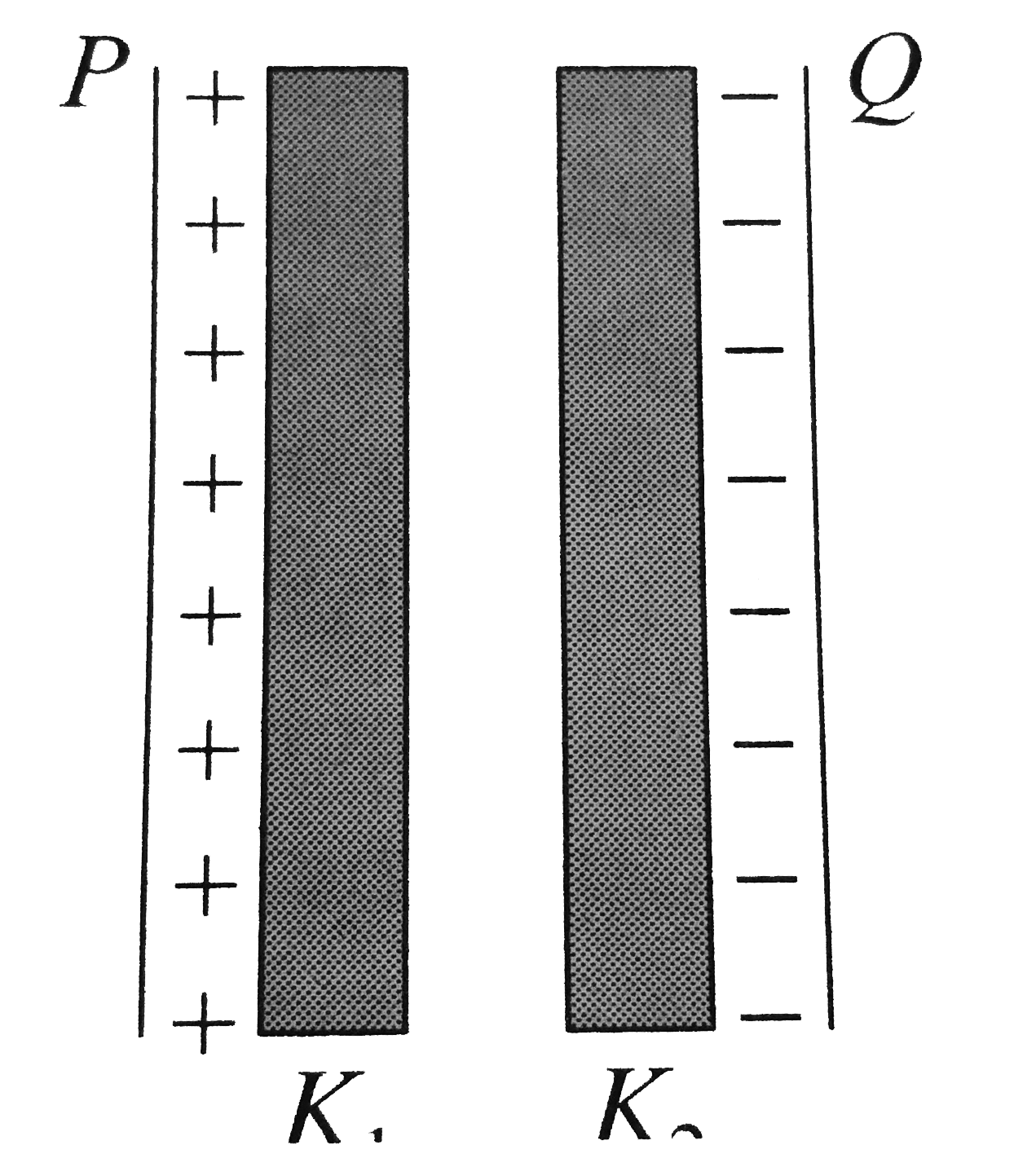Two springs have their force constant as K1 and K2(K1<K2). When they are stretched by the same force:
No work is done is case of both the springs.
Equal work is done in case of both the spring
More work done in case of second spring
More work is done in case of first spring
The correct Answer is:C
To solve the problem, we need to analyze the relationship between the force constants of the springs, the forces applied to them, and the work done on each spring.
1. Understanding the Force on Springs:
We are given two springs with force constants K1 and K2 such that K1<K2. When the same force F is applied to both springs, we can denote the forces on the springs as F1 for spring 1 and F2 for spring 2. Since the same force is applied, we have:
F1=F2=F
2. Using Hooke's Law:
According to Hooke's Law, the force exerted by a spring is given by:
F=K⋅x
where x is the extension or compression of the spring. For the two springs, we can write:
F=K1⋅x1(for spring 1)
F=K2⋅x2(for spring 2)
3. Relating Extensions to Force Constants:
Since both springs are subjected to the same force F, we can express the extensions x1 and x2 in terms of the force constants:
x1=FK1
x2=FK2
4. Comparing Extensions:
Since K1<K2, it follows that:
x1=FK1>x2=FK2
This means the extension of spring 1 is greater than that of spring 2.
5. Calculating Work Done on Each Spring:
The work done on a spring when it is stretched is given by the formula:
W=12Kx2
Therefore, the work done on spring 1 is:
W1=12K1x21
and for spring 2:
W2=12K2x22
6. Substituting the Extensions into Work Done:
Substitute the expressions for x1 and x2:
W1=12K1(FK1)2=12F2K1
W2=12K2(FK2)2=12F2K2
7. Comparing Work Done:
Since K1<K2, it follows that:
1K1>1K2
Therefore:
W1>W2
This means more work is done on spring 1 compared to spring 2.
Conclusion:
The work done on the first spring (with lower spring constant) is greater than the work done on the second spring (with higher spring constant).
Final Answer:
More work is done on the first spring than on the second spring.
---
We are given two springs with force constants K1 and K2 such that K1<K2. When the same force F is applied to both springs, we can denote the forces on the springs as F1 for spring 1 and F2 for spring 2. Since the same force is applied, we have:
F1=F2=F
According to Hooke's Law, the force exerted by a spring is given by:
F=K⋅x
where x is the extension or compression of the spring. For the two springs, we can write:
F=K1⋅x1(for spring 1)
F=K2⋅x2(for spring 2)
Since both springs are subjected to the same force F, we can express the extensions x1 and x2 in terms of the force constants:
x1=FK1
x2=FK2
Since K1<K2, it follows that:
x1=FK1>x2=FK2
This means the extension of spring 1 is greater than that of spring 2.
The work done on a spring when it is stretched is given by the formula:
W=12Kx2
Therefore, the work done on spring 1 is:
W1=12K1x21
and for spring 2:
W2=12K2x22
Substitute the expressions for x1 and x2:
W1=12K1(FK1)2=12F2K1
W2=12K2(FK2)2=12F2K2
Since K1<K2, it follows that:
1K1>1K2
Therefore:
W1>W2
This means more work is done on spring 1 compared to spring 2.
The work done on the first spring (with lower spring constant) is greater than the work done on the second spring (with higher spring constant).
More work is done on the first spring than on the second spring.
Similar Questions
Two springs have their force constant as k1 and k2(k1>k2). When they are streched by the same force.
View SolutionTwo springs have force constants kA such that kB=2kA. The four ends of the springs are stretched by the same force. If energy stored in spring A is E, then energy stored in spring B is
View SolutionTwo similar springs P and Q have spring constant KP and KQ such that KP>KQ. They are stretched, first by the same amount (case a), then the same force (case b). The work done by the spring WP and WQ are related as, in case (b), respectively
View SolutionTwo springs have spring constants k1andk2(k1≠k2). Both are extended by same force. If their elastic potential energical are U1andU2, then U1:U2 is
View SolutionTwo springs have spring constants k1andk2(k1≠k2). Both are extended by same force. If their elastic potential energical are U1andU2, then U2 is
View SolutionTwo springs with spring constants K1=1500N/mand m K2=3000N/m are stretched by the same force. The ratio of potential energy stored in spring will be
View SolutionTwo springs have force constants k1 and k2(k1>k2). On which spring is more work done, if (i) they are stretched by the same force and (ii) they are stretched by the same amount ?
View SolutionTwo spring P and Q having stiffness constants k1 and k2(<k1), respectively are stretched equally. Then
View SolutionThis question has statement 1 and statement 2 . Of the four choice given after the Statement , choose the one that best describe the two Statement .
If the spring S1and S2 of force constant k1 and k2 respectively , are streached by the same force , it is found that more work is done on spring S1 then on spring S2
Statement -1: If statement by the same answer work done on S1 work on S1 is more then S2
Statement - 2 : k1<k2
View SolutionTwo thin dielectric slabs of dielectric constants K1 and K2(K1<K2) are inserted between plates of a parallel plate capacitor, as shown in the figure. The variation of electric field E between the plates with distance d as measured from plate P is correctly shown by

View Solution
